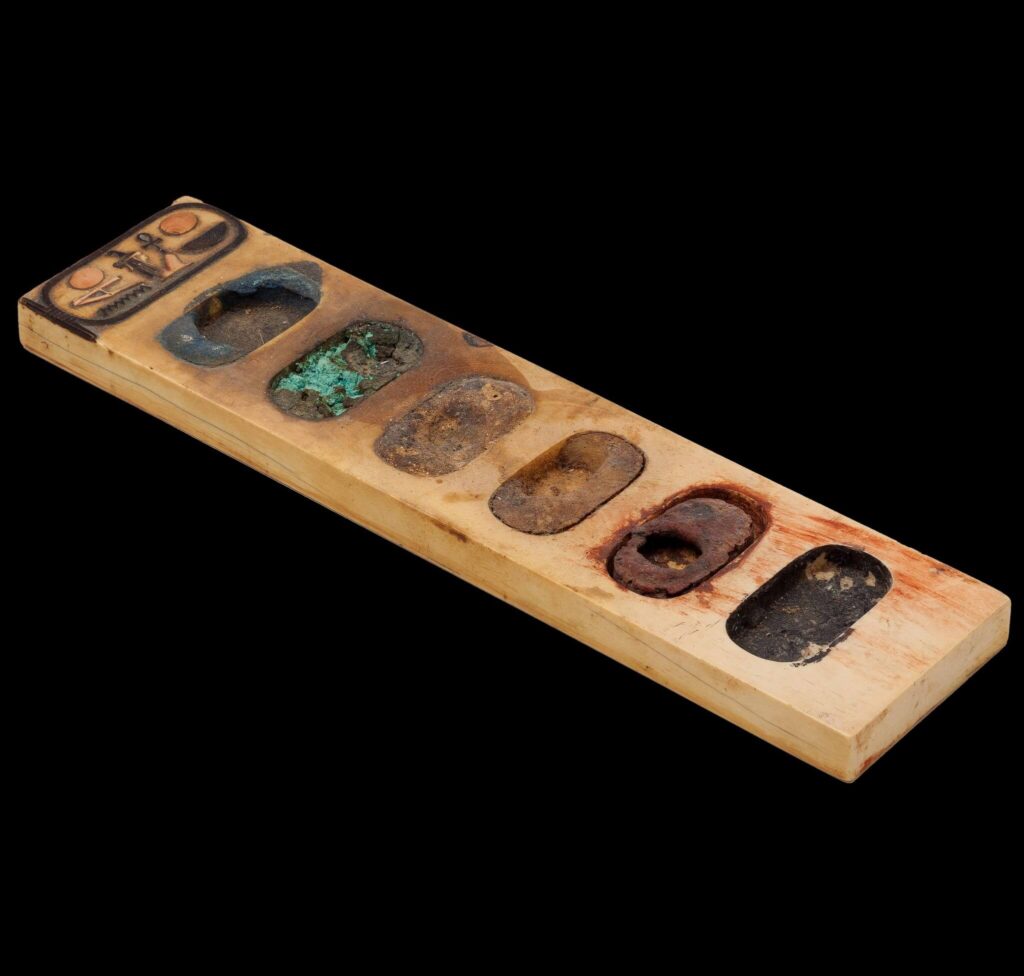Uncovering the Rich Meaning Behind the Palette of the Pharaohs
It’s a good bet your first box of crayons or watercolors was a simple affair of six or so colors… just like the palette belonging to Amenemopet, vizier to Pharaoh Amenhotep III (c.1391 — c.1354 BC), a pleasure-loving patron of the arts whose rule coincided with a period of great prosperity.
Amenemopet’s well-used artist’s palette, now residing in the Egyptian wing of New York City’s Metropolitan Museum of Art, offers a fascinating window into the vibrant and symbolic world of ancient Egyptian art. Over 3000 years old and carved from a single piece of ivory, this palette is marked “beloved of Re,” a royal reference to the sun god dear to both Amenhotep III and Akhenaton, his son and successor, whose worship of Re resembled monotheism.
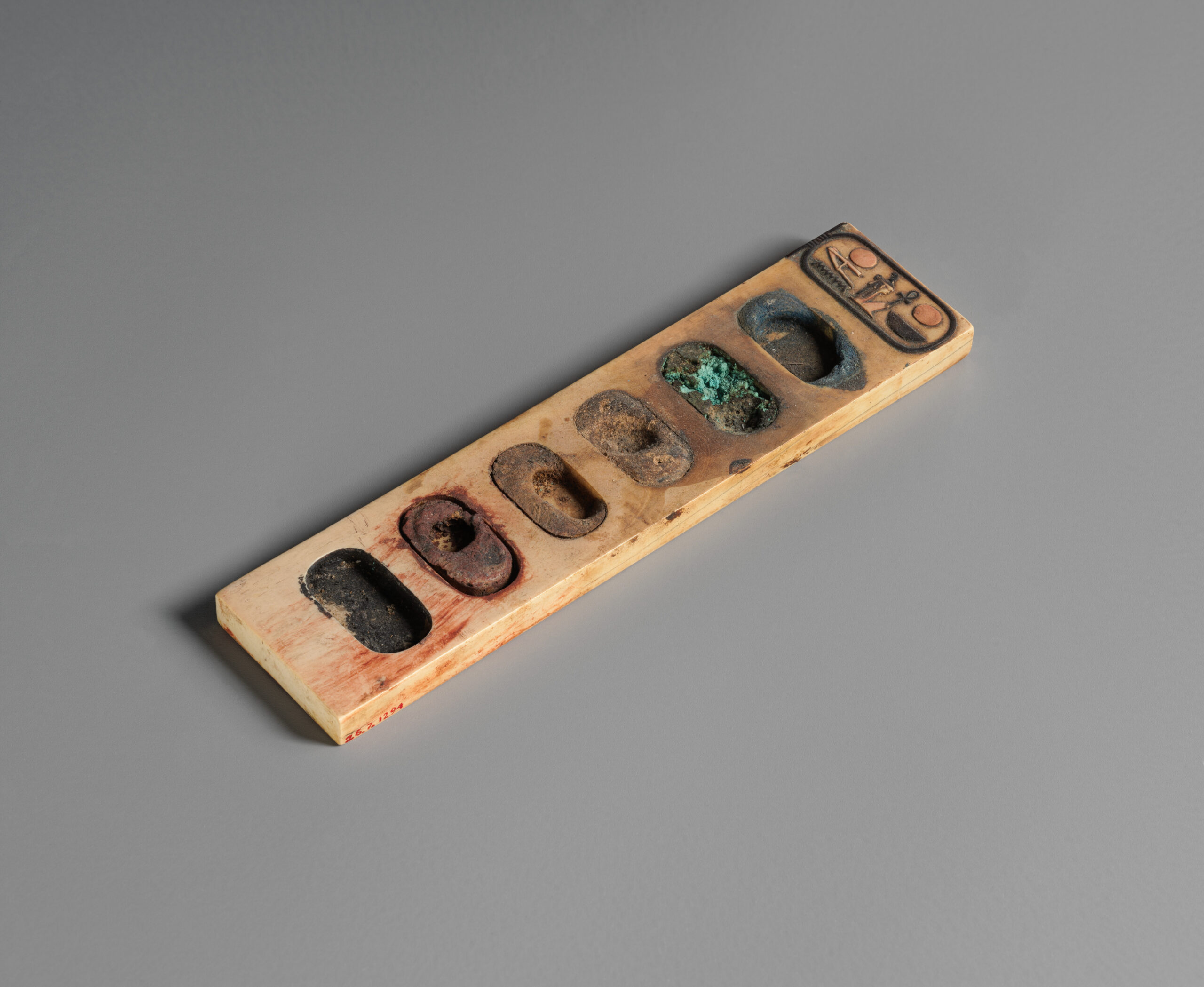
As curator Catharine H. Roehrig notes, the palette “contains the six basic colors of the Egyptian palette, plus two extras: reddish brown, a mixture of red ocher and carbon; and orange, a mixture of orpiment (yellow) and red ocher. The painter could also vary his colors by applying a thicker or thinner layer of paint or by adding white or black to achieve a lighter or darker shade.”
But the significance of these ancient pigments went far beyond mere artistic expression. The colors themselves held deep symbolic meaning for the Egyptians, and the artist would have made very deliberate—regulated, even—choices as to which pigment to load onto their palm fiber brush when decorating tombs, temples, public buildings, and pottery.
The Symbolic Meaning of Color in Ancient Egypt
Let’s dive deeper into the rich symbolism behind the six basic colors of the ancient Egyptian palette:
Wadj (Green): This color not only represented the lush vegetation of the Nile Valley, but also symbolized new life, fertility, and health. The hieroglyph for “green” depicted the papyrus plant, as well as the green stone malachite. Actions that preserved the land’s fertility or promoted life were described as “green.”
Dshr (Red): A powerful color, red was associated with blood, particularly the protective power of the blood of the goddess Isis. It could also represent anger, chaos, and the unpredictable god Set, who had red hair. Someone in a fit of rage was described as having a “red heart,” while “to redden” was a euphemism for dying.
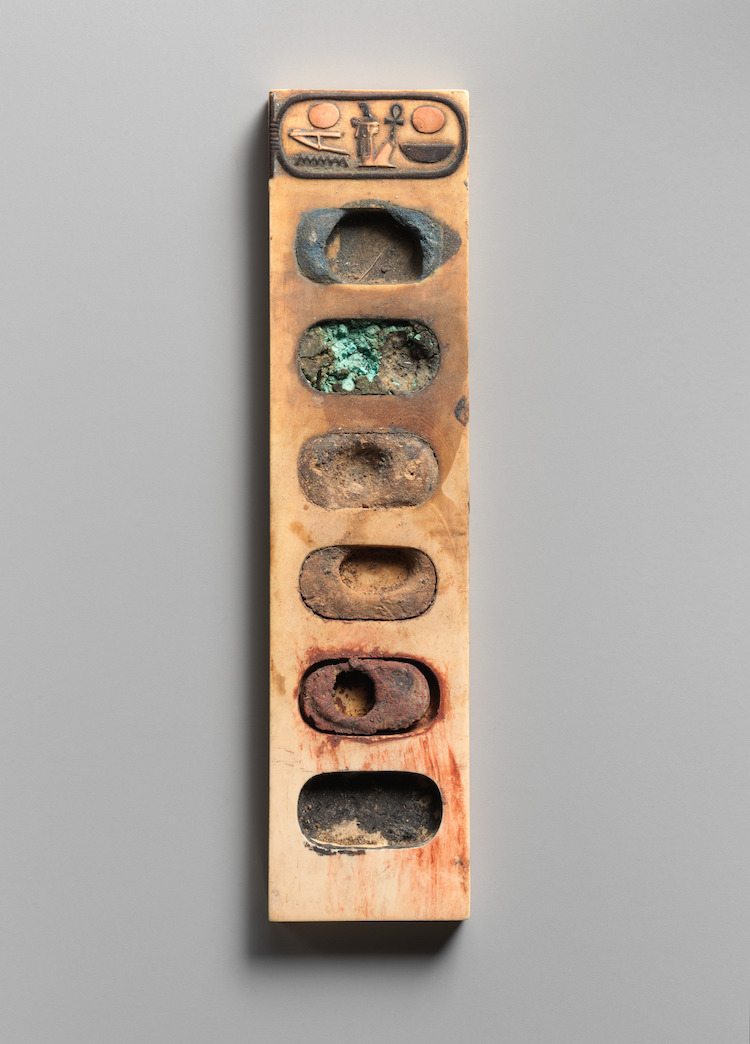
Irtyu (Blue): The color of the heavens, blue represented the universe and the primeval waters of chaos. Many temples, sarcophagi, and burial vaults featured deep blue ceilings speckled with tiny yellow stars.
Khenet (Yellow): Representing the eternal and indestructible, yellow was closely linked to gold, which was thought to be the substance that formed the skin of the gods. The sun, a symbol of divinity, was also associated with this vibrant hue.
Hdj (White): A symbol of purity and omnipotence, white was the color worn by priests during religious rituals. It was also seen as the opposite of the chaotic red, and the two were often paired to represent completeness.
Kem (Black): Associated with death and the afterlife, black was the color of the god Osiris, the king of the underworld. However, it also represented fertility and resurrection, as the rich black silt deposited by the Nile’s annual floods nourished the land.
The Deliberate Choices of the Ancient Egyptian Artist
As these examples illustrate, the colors used in ancient Egyptian art were not mere aesthetic choices, but rather carefully selected to convey deep symbolic meaning. The artist would have been highly attuned to the significance of each pigment, and would have made very deliberate decisions about which colors to use in their work.
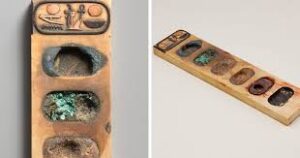
This attention to color symbolism is evident in the tomb paintings, temple decorations, and other artifacts that have survived from ancient Egypt. For example, the gods and goddesses are often depicted in specific colors that align with their attributes and domains. Osiris, the god of the underworld, is shown in green and black, while Ra, the sun god, is represented in vibrant yellow and gold.
The ancient Egyptians’ reverence for color extended beyond the visual arts and into their language as well. As mentioned earlier, the word “iwn,” which can be translated as “color,” also carried meanings of “disposition,” “character,” and “nature.” This deep connection between color and the essence of being underscores the profound importance of these pigments in the Egyptian worldview.
Preserving the Legacy of Ancient Egyptian Art
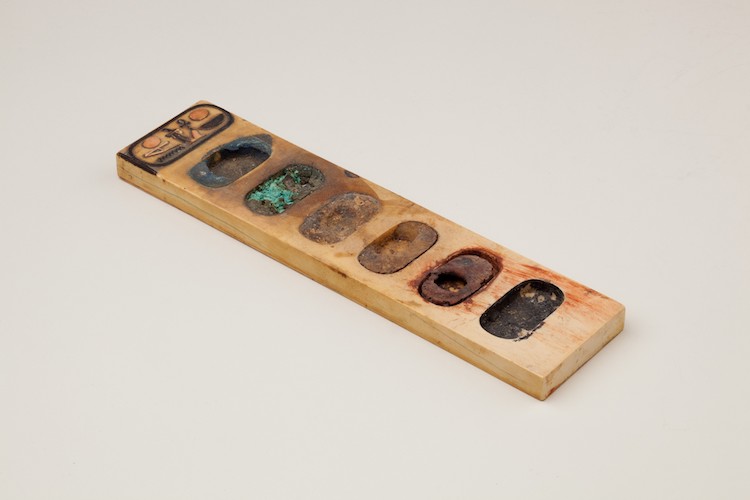
Today, the legacy of ancient Egyptian art lives on, not only in the artifacts and monuments that have survived the millennia, but also in the continued fascination and study of these captivating works. The Metropolitan Museum of Art’s preservation of Amenemopet’s artist’s palette, for instance, allows us to glimpse the tools and techniques of the ancient masters, while also shedding light on the rich symbolism that imbued their creations.
As we continue to uncover the secrets of the past, the colors and symbolism of ancient Egyptian art offer a powerful reminder of the depth and complexity of this remarkable civilization. From the verdant greens of the Nile Valley to the fiery reds of the desert sun, these vibrant hues speak to the enduring human desire to imbue our world with meaning and beauty.
So the next time you pick up a paintbrush or a box of crayons, take a moment to reflect on the ancient legacy of color and its power to captivate, inspire, and reveal the very essence of the human experience.
